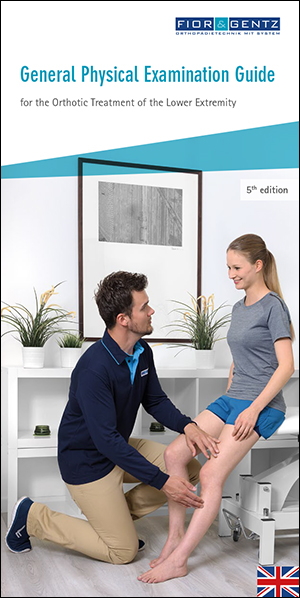Physical Exam
- Physical Exam
- Planning the Orthosis
- Model Technique
- Handing Over the Orthosis
- Maintenance
- Products in the Spotlight
- Downloads
FIOR & GENTZ
Gesellschaft für Entwicklung und Vertrieb von orthopädietechnischen Systemen mbH
Dorette-von-Stern-Straße 5
D-21337 Lüneburg
Tel.: +49 4131 24445-0
Fax: +49 4131 24445-57
E-Mail: info(at)fior-gentz.de
Beratung und Technischer Support
Physical Exam
for the Orthotic Treatment of the Lower Extremity
An individual AFO, KAFO or KO is exclusively produced for its user. Body measurements and muscle strength are examples for patient related data determined during the physical exam. Number and accuracy of the gathered data have a great effect on the orthosis.
In the Physical Exam online tutorial, we show all relevant steps. Please use the Orthotic Treatment Sheet to write down any patient data. It serves as a basis for the Orthosis Configurator and the communication with our Clinical Support.
-
Body Weight and Height
-
Step 1/2
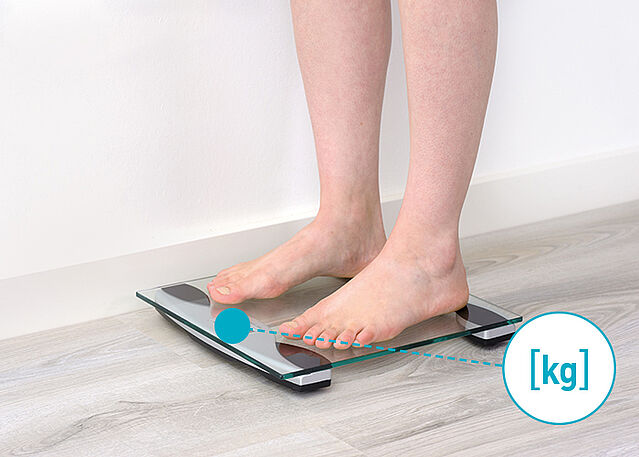
Body Weight
Determine the body weight. Foreseeable changes, like a weight gain due to growth, should be taken into consideration.Step 2/2
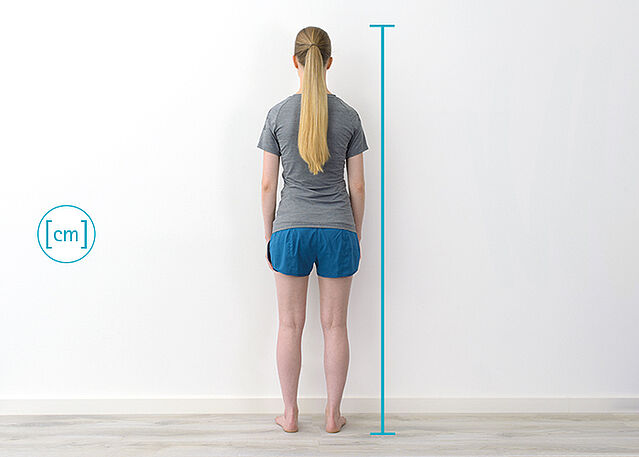
Body Height
Determine the body height. Foreseeable changes, like a change in height due to growth, should be taken into consideration.

-
Range of Motion of the Upper Ankle Joint
-
Step 1/7
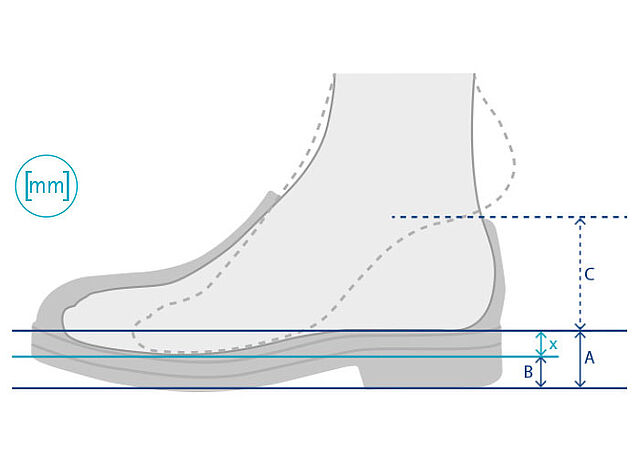
Pitch and Height Compensation
Determine the pitch x of the shoe (difference between heel height A and sole thickness B in ball area). Measure A and B and apply the formula x = A - B. Then, transfer the determined pitch to the h-Cast.Step 2/7
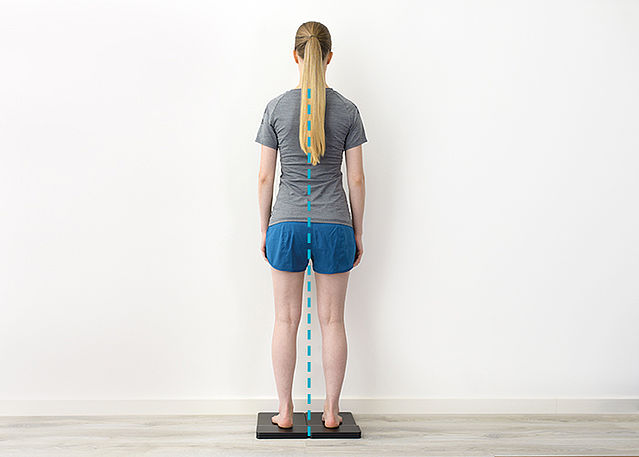
Leg Length/Height Compensation
The patient stands on the h-Cast. Check if the patient stands vertically, for example using a plumb laser. The plumb bob should fall from the 7th cervical vertebra (C7) through the cleft between the buttocks and the middle of the supportive area of both feet. If this is not the case, the patient needs a height compensation (for example due to a unilateral contracture). Determine the height compensation (see C at Step 1) and transfer it to the h-Cast. Check the result.Step 3/7
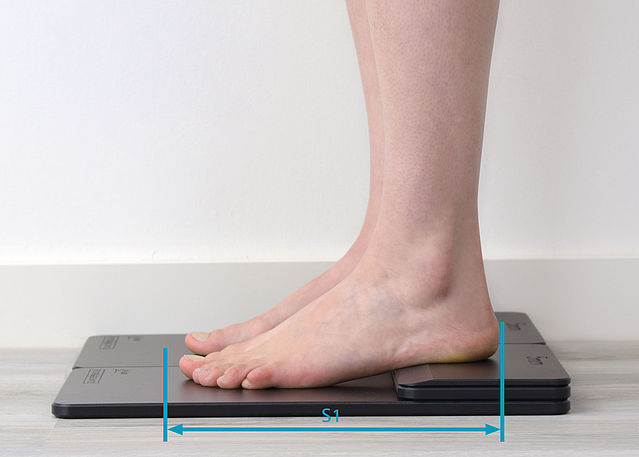
Shoe Size
Determine the shoe size (S1). If the feet should differ in length, write down the larger shoe size.Step 4/7
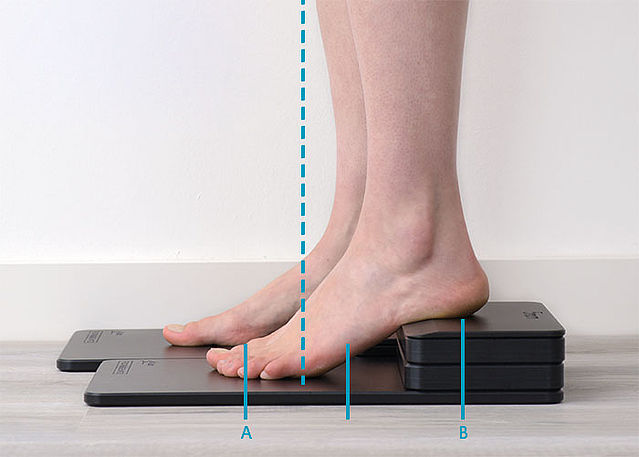
Length Differenc
Place the standing patient on two h-Casts. Ensure the correct position of the plumb bob. It should fall posteriorly from cervical vertebrae C7 through the intergluteal cleft to the middle floor space of both feet and on the sagittal plane from the ear through the greater trochanter to the front half between the functional rolling off line A and the heel lever B.Step 5/7
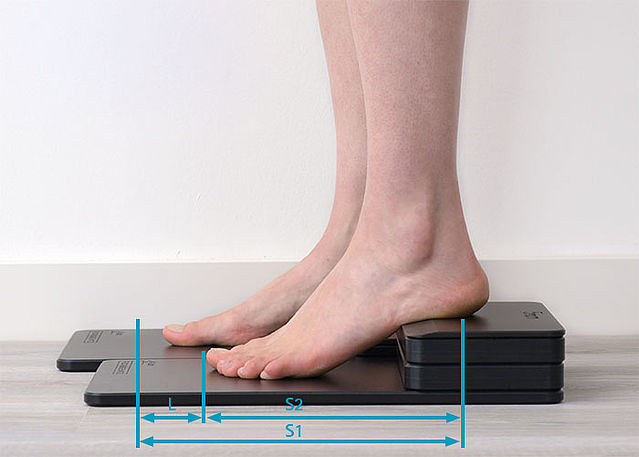
Length Difference
Determine the length difference L. To do so, measure S1 and S2 and apply the formula L = S1 - S2. Write down the length difference L in order to be able to compensate the difference during following steps.
Important: For the step length to be symmetric, the leverage ratio should be the same on both sides. Therefore, the rolling off line’s position and the heel lever must be adjusted if there is a functional shortening (e.g. due to a height compensation).Step 6/7
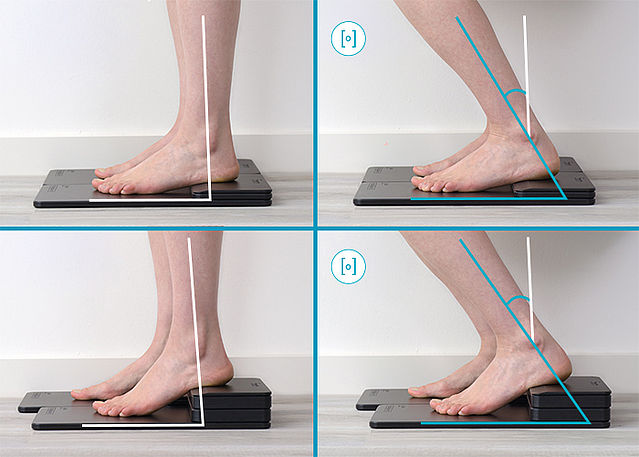
Range of Motion of the Upper Ankle Joint in Dorsiflexion
The range of motion of the upper ankle joint is measured based on the individual normal posture. Place the patient on the h-Cast considering the leg length/height compensation and the shoe's pitch. Measure the range of motion of the upper ankle joint in dorsiflexion based on the individual normal posture.Step 7/7
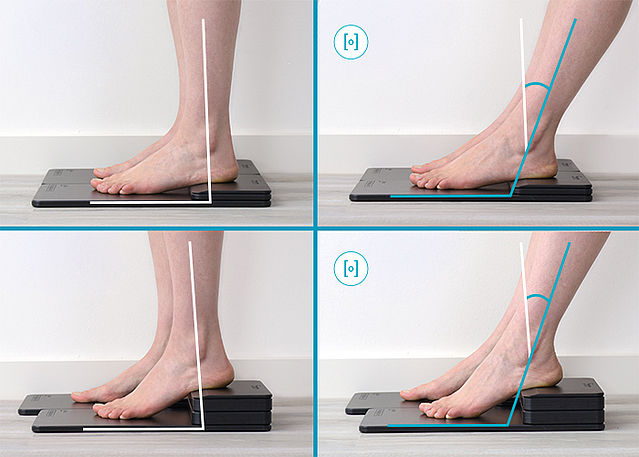
Range of Motion of the Upper Ankle Joint in Plantar Flexion
The range of motion of the upper ankle joint is measured based on the individual normal posture. Place the patient on the h-Cast considering the leg length/height compensation and the shoe's pitch. Measure the range of motion of the upper ankle joint in plantar flexion based on the individual normal posture.






-
Joint Angles
-
Step 1/6
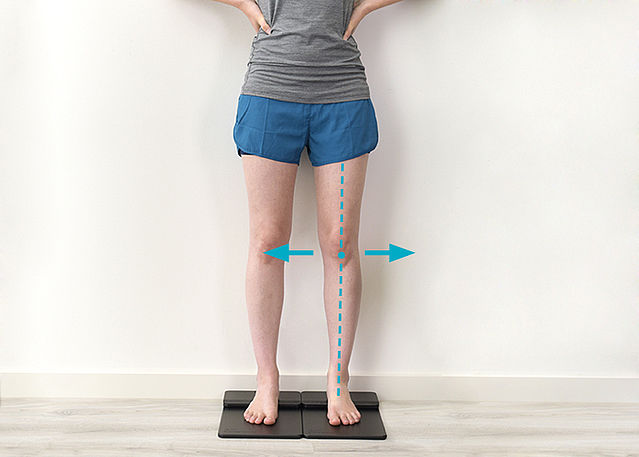
Deformities
The patient stands on the h-Cast. Determine into which direction the leg axis deviates from the neutral position, if any.Step 2/6
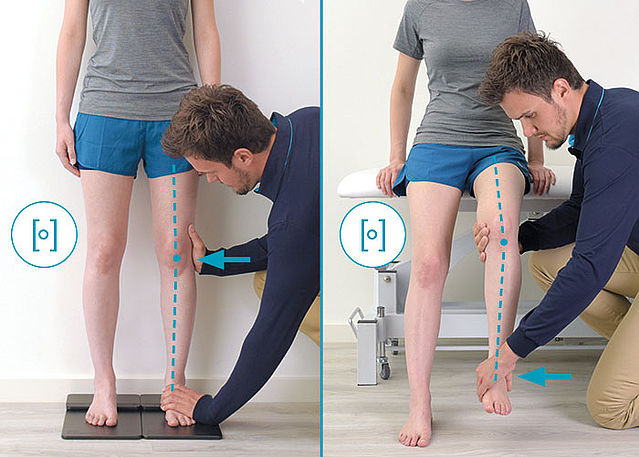
Varus Deformity - Maximum and Corrected
If there is a deviation in varus, correct it as far as possible and determine the value of the corrected varus deformity. Is the deformity not correctable, we still recommend to use the box on the orthotic treatment sheet to document the assessed data. Then, determine the maximum of the varus deformity without load on the leg. If the values coincide, there is a deformity, but no instability.Step 3/6
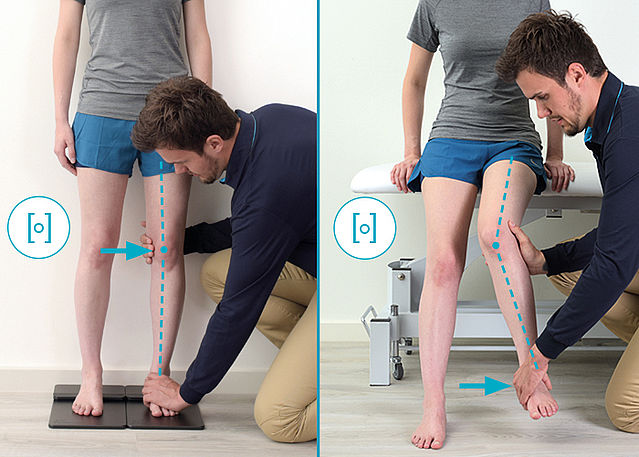
Valgus Deformity - Maximum and Corrected
If there is a deviation in valgus, correct it as far as possible and determine the value of the corrected valgus deformity. Is the deformity not correctable, we still recommend to use the box on the orthotic treatment sheet to document the assessed data. Then, determine the maximum of the valgus deformity without load on the leg. If the values coincide, there is a deformity, but no instability.Step 4/6
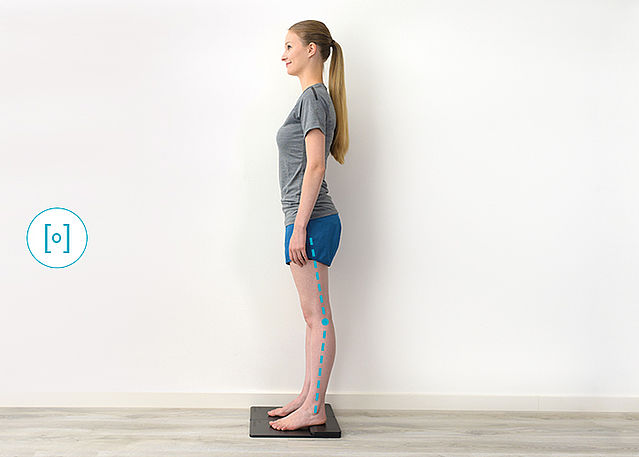
Hyperextension - Maximum and Corrected
Measure the maximum knee hyperextension. Correct the position, if possible, in order to achieve a physiological knee angle. Due to patient-specific characteristics, this cannot be achieved in some cases. Determine the corrected hyperextension (e.g. 4°) in any case. All values, which exceed 0° flexion (e.g. 4° flexion), undo any hyperextension and are marked as 0°.Step 5/6
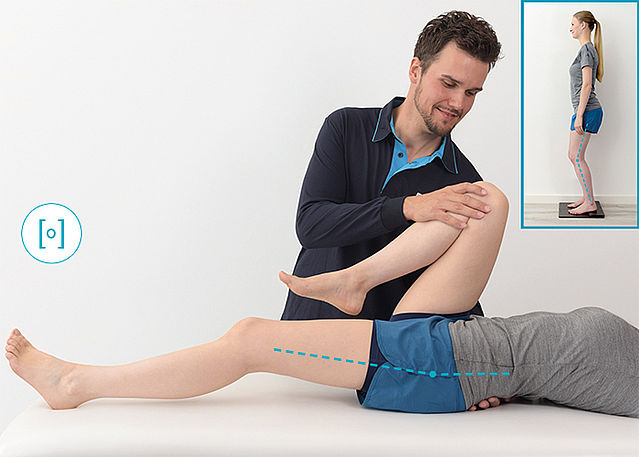
Extension Limitation of the Hip
Apply the Thomas test to assess the extension limitation of the hip. The patient lies on the back. Place one hand under the lumbar vertebrae to check the delordosing of the lumbar spine. Bring the leg not to be tested into hip flexion with the knee bent. Measure the hip flexion angle on the side to be tested. Please note that the assessed extension limitation of the hip can affect the individual normal posture in the sagittal plane.Step 6/6
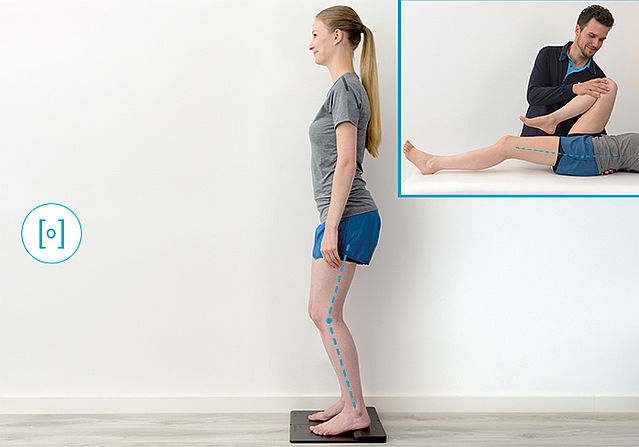
Extension Limitation of the Knee
The patient stands on the h-Cast. Adjust it accordingly to take all influencing factors, like the extension limitation of the hip, into consideration. Measure the knee angle. It deviates from the physiological angle if there is an extension limitation in the knee and/or hip. Pain can also be a factor causing deviations.





-
Muscle Strength - Foot
-
Step 1/10
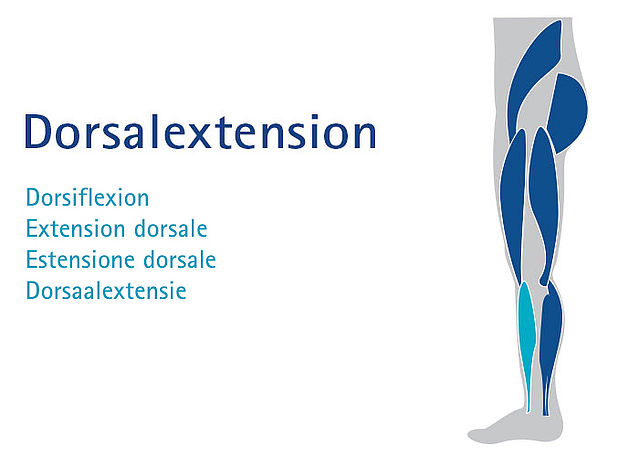
Step 2/10
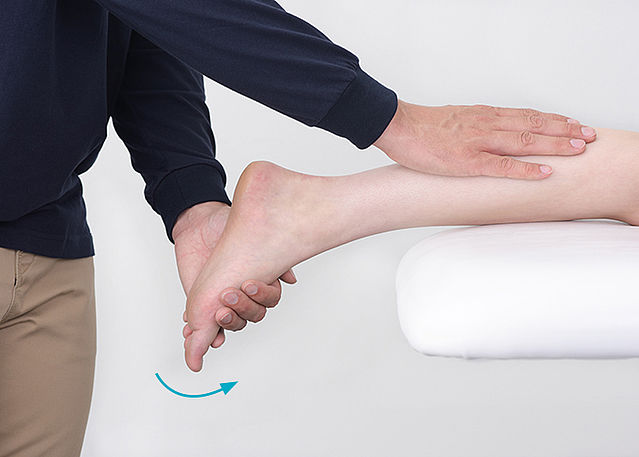
Dorsiflexion - Muscle Strength 5 and 4
The patient lies on the stomach, the foot of the leg to be tested hangs over the edge of the bed. Fix with one hand the lower leg without restricting the muscle function. Push against the dorsum of the foot with the other hand. Have the patient bring the foot in dorsiflexion. At complete range of motion against gravity with full resistance, the muscle strength is 5. At complete range of motion against gravity with some resistance, the muscle strength is 4.Step 3/10
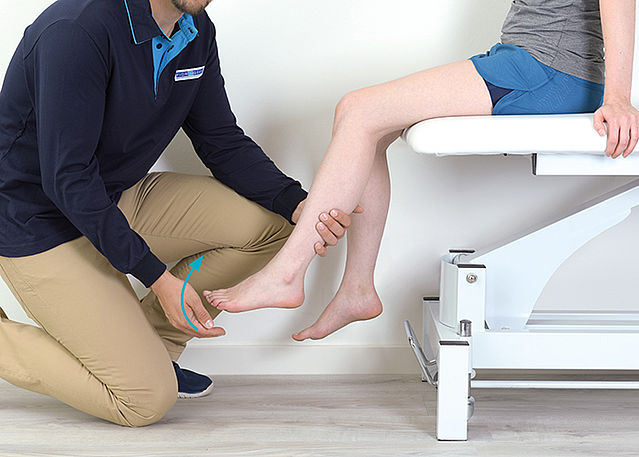
Dorsiflexion - Muscle Strength 3
The patient sits, the lower legs hang over the edge of the bed. Fix with one hand the lower leg without restricting the muscle function. Have the patient bring the foot in dorsiflexion. At complete range of motion against gravity, the muscle strength is 3.Step 4/10
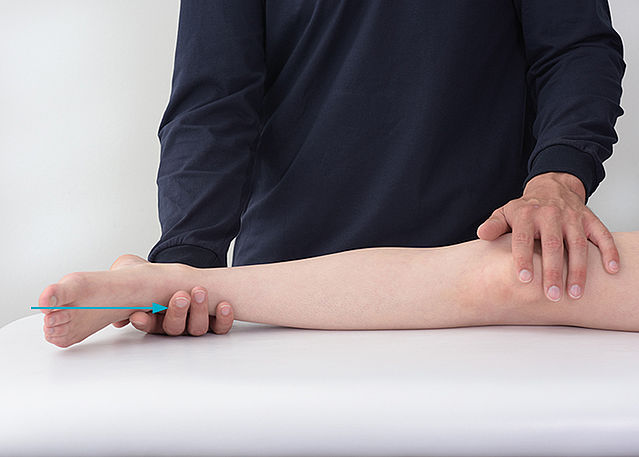
Dorsiflexion - Muscle Strength 2
The patient lies on the side of the leg to be tested. Place one hand under the foot so that it does not rest on the bed anymore. Have the patient bring the foot in dorsiflexion. At complete range of motion with gravity eliminated, the muscle strength is 2.Step 5/10
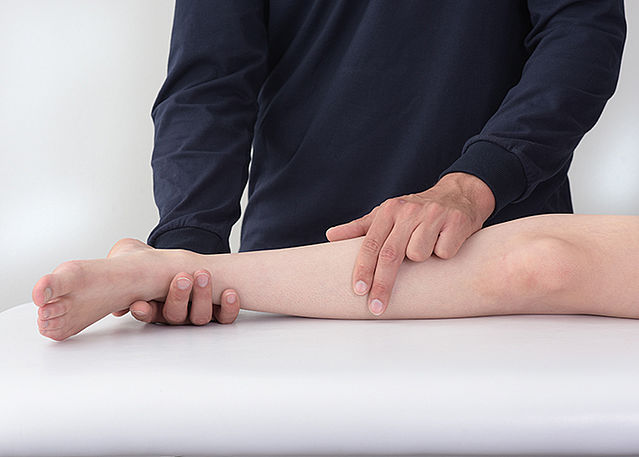
Dorsiflexion - Muscle Strength 1 and 0
The patient lies on the side of the leg to be tested. Place one hand under the foot so that it does not rest on the bed anymore. Have the patient bring the foot in dorsiflexion. Palpate if there is any muscle activity. At slight contraction with no joint motion, the muscle strength is 1. At no evidence of contraction, there is a total paralysis and the muscle strength is 0.Step 6/10
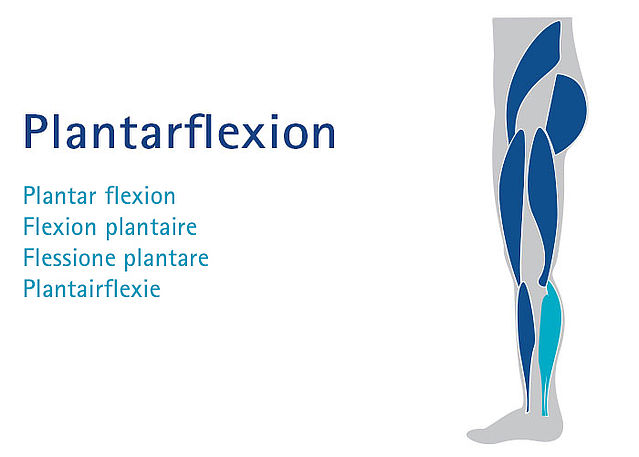
Step 7/10
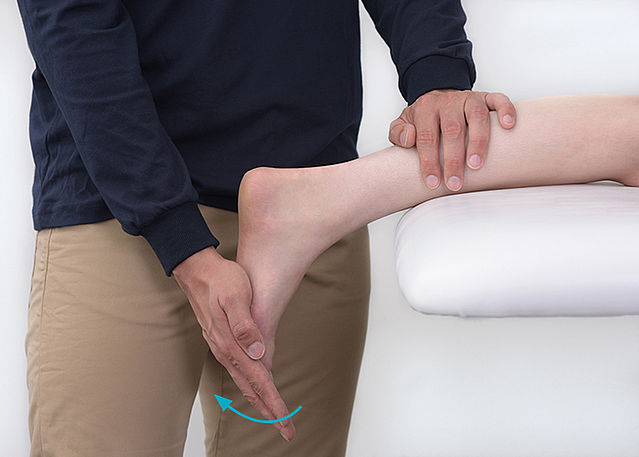
Plantar Flexion - Muscle Strength 5 and 4
The patient lies on the stomach, the foot of the leg to be tested hangs over the edge of the bed. Fix with one hand the lower leg without restricting the muscle function. Push against the forefoot from below with the other hand. Have the patient bring the foot in plantar flexion. At complete range of motion against gravity with full resistance, the muscle strength is 5. At complete range of motion against gravity with some resistance, the muscle strength is 4.Step 8/10
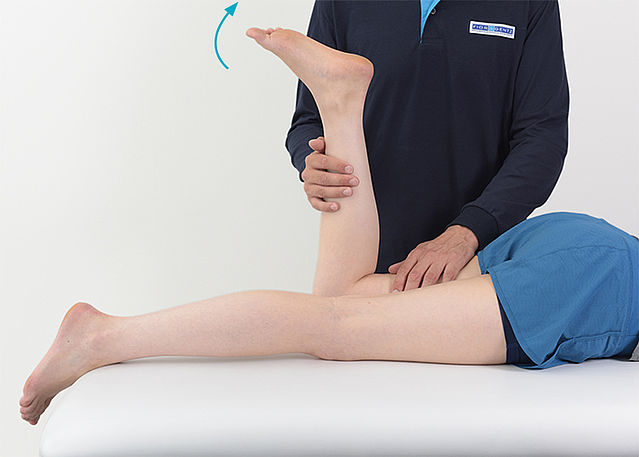
Plantar Flexion - Muscle Strength 3
The patient lies on the stomach, the leg to be tested is flexed. Have the patient bring the foot in plantar flexion. At complete range of motion against gravity, the muscle strength is 3.Step 9/10
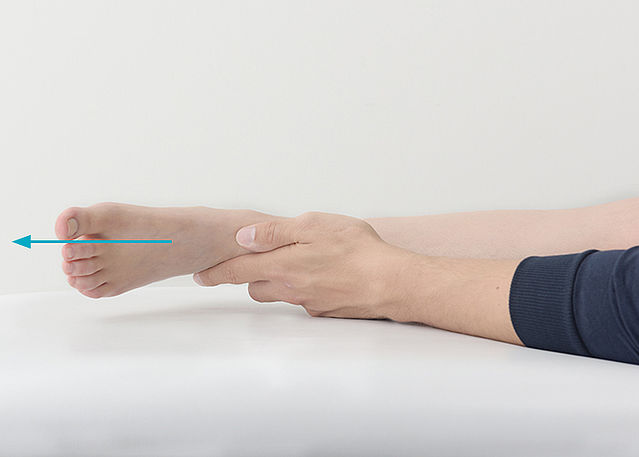
Plantar Flexion - Muscle Strength 2
The patient lies on the side of the leg to be tested. Place one hand under the foot so that it does not rest on the bed anymore. Have the patient bring the foot in plantar flexion. At complete range of motion with gravity eliminated, the muscle strength is 2.Step 10/10
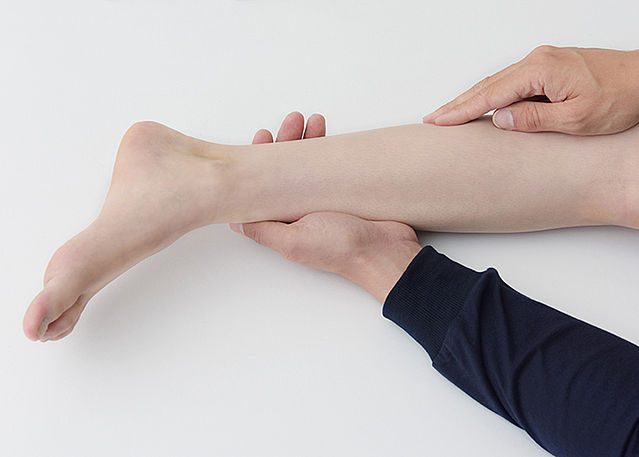
Plantar Flexion - Muscle Strength 1 and 0
The patient lies on the side of the leg to be tested. Place one hand under the foot so that it does not rest on the bed anymore. Have the patient bring the foot in plantar flexion. Palpate if there is any muscle activity. At slight contraction with no joint motion, the muscle strength is 1. At no evidence of contraction, there is a total paralysis and the muscle strength is 0.









-
Muscle Strength - Knee
-
Step 1/10
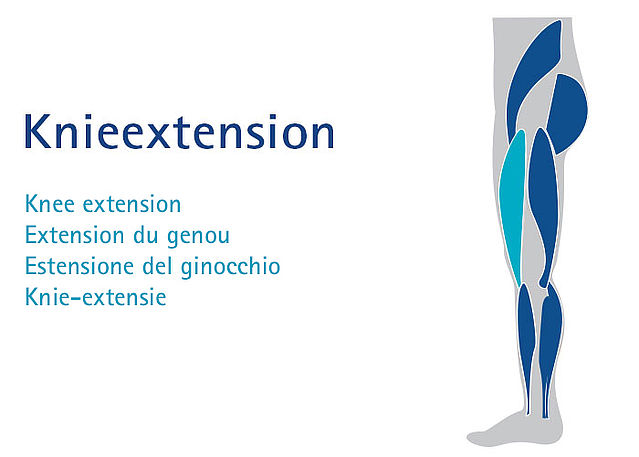
Step 2/10
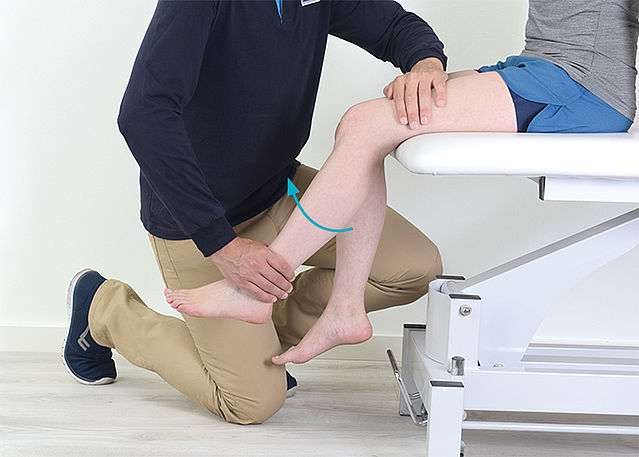
Knee Extension - Muscle Strength 5 and 4
The patient sits, the lower legs hang over the edge of the bed. Fix with one hand the lower leg without restricting the muscle function. Push against the lower leg above the foot with the other hand. Have the patient bring the knee in extension. At complete range of motion against gravity with full resistance, the muscle strength is 5. At complete range of motion against gravity with some resistance, the muscle strength is 4.Step 3/10
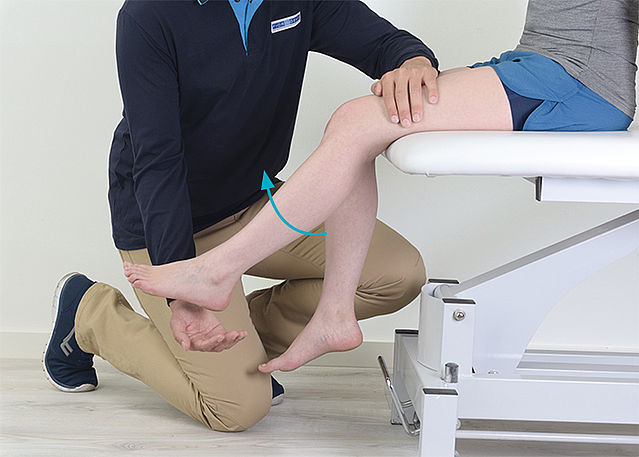
Knee Extension - Muscle Strength 3
The patient sits, the lower legs hang over the edge of the bed. Fix with one hand the lower leg without restricting the muscle function. Have the patient bring the knee in extension. At complete range of motion against gravity, the muscle strength is 3.Step 4/10
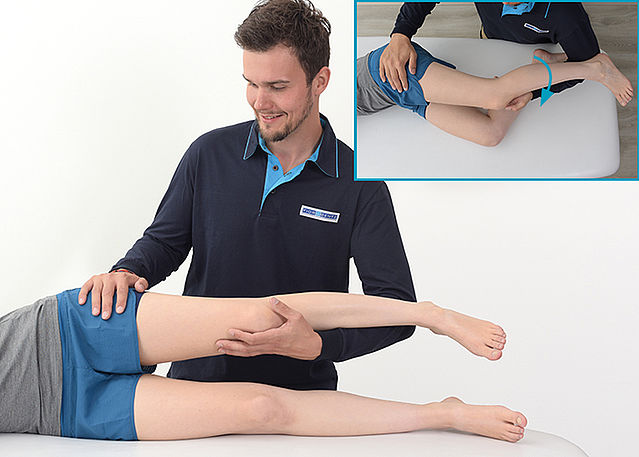
Knee Extension - Muscle Strength 2
The patient lies on the side of the leg not to be tested. Support and lift the upper leg. Fix with the other hand the pelvis without restricting the muscle function. The leg to be tested is slightly flexed. Have the patient bring the knee in extension. At complete range of motion with gravity eliminated, the muscle strength is 2.Step 5/10
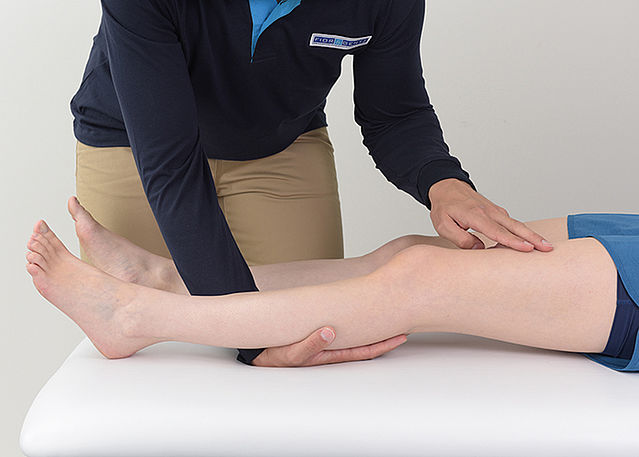
Knee Extension - Muscle Strength 1 and 0
The patient lies on the back, the leg to be tested is slightly flexed in hip and knee. The other leg remains extended. Have the patient bring the knee in extension. Palpate if there is any muscle activity. At slight contraction with no joint motion, the muscle strength is 1. At no evidence of contraction, there is a total paralysis and the muscle strength is 0.Step 6/10
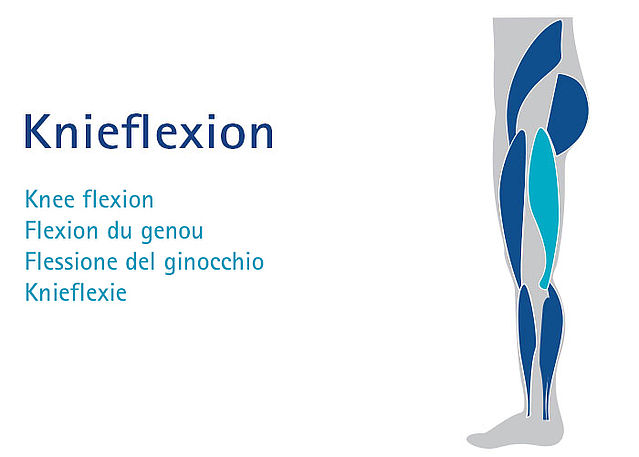
Step 7/10
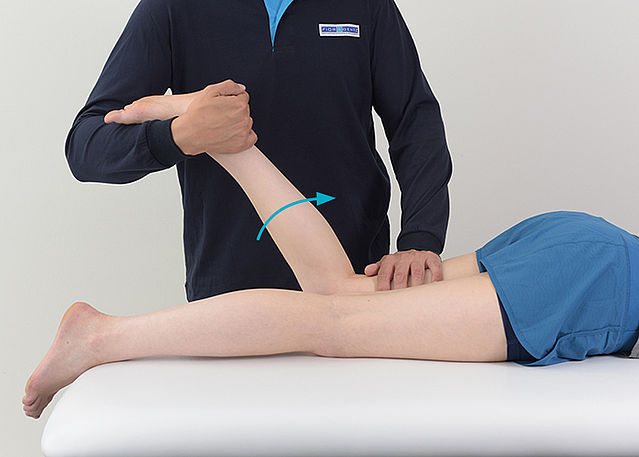
Knee Flexion - Muscle Strength 5 and 4
The patient lies on the stomach, one foot hangs over the edge of the bed and the leg to be tested is flexed. Fix with one hand the lower leg without restricting the muscle function. Push against the lower leg close to the foot with the other hand. Have the patient bring the knee in flexion. At complete range of motion against gravity with full resistance, the muscle strength is 5. At complete range of motion against gravity with some resistance, the muscle strength is 4.Step 8/10
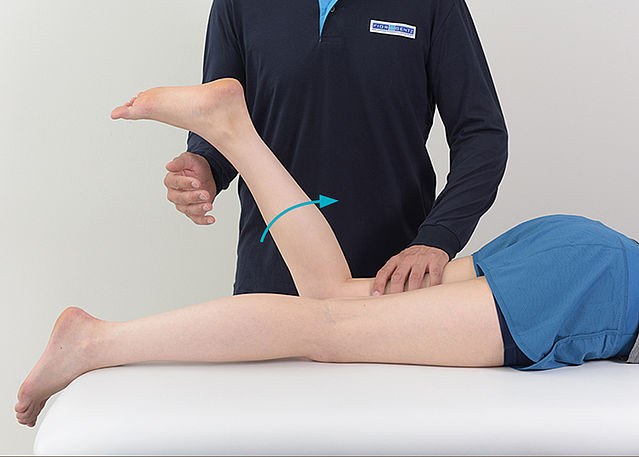
Knee Flexion - Muscle Strength 3
The patient lies on the stomach, one foot hangs over the edge of the bed and the leg to be tested is flexed. Fix with one hand the lower leg without restricting the muscle function. Have the patient bring the knee in flexion. At complete range of motion against gravity, the muscle strength is 3.Step 9/10
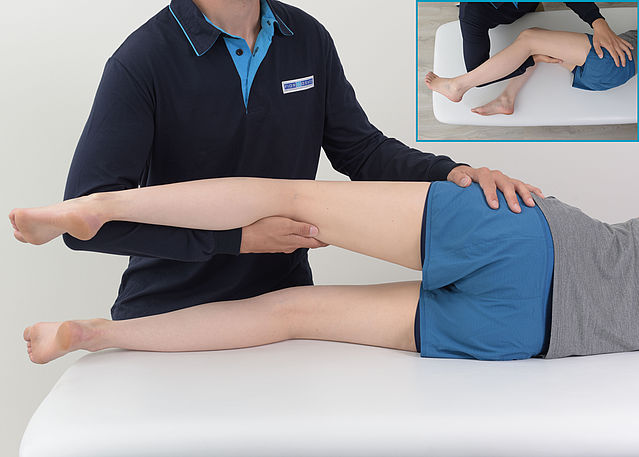
Knee Flexion - Muscle Strength 2
The patient lies on the side of the leg not to be tested and the upper leg is slightly flexed. Support and lift the upper leg. Fix with the other hand the pelvis without restricting the muscle function. Have the patient bring the knee in flexion. At complete range of motion with gravity eliminated, the muscle strength is 2.Step 10/10
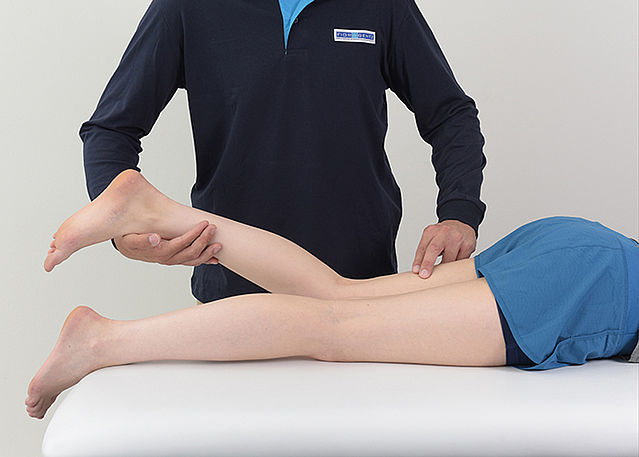
Knee Flexion - Muscle Strength 1 and 0
The patient lies on the stomach, one foot hangs over the edge of the bed and the leg to be tested is slightly flexed. Support the flexed leg with one hand. Have the patient bring the knee in flexion. With the other hand, palpate if there is any muscle activity. At slight contraction with no joint motion, the muscle strength is 1. At no evidence of contraction, there is a total paralysis and the muscle strength is 0.









-
Muscle Strength - Hip
-
Step 1/10
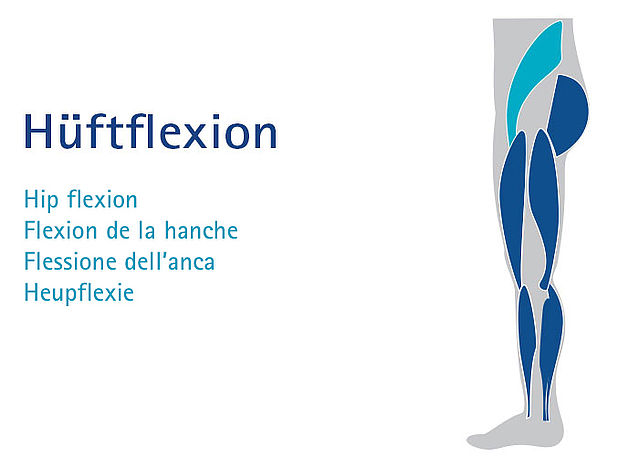
Step 2/10
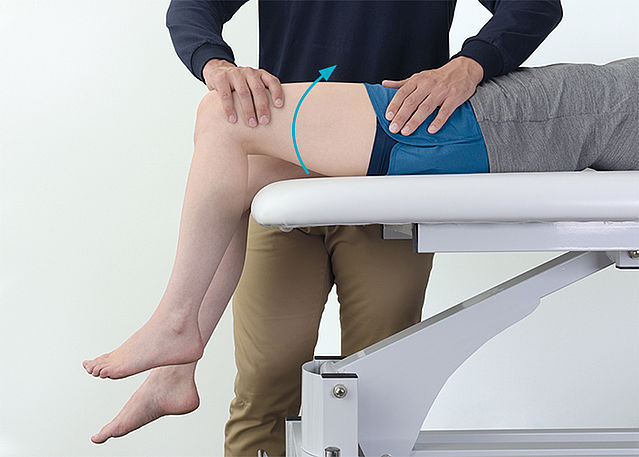
Hip Flexion - Muscle Strength 5 and 4
The patient lies on the back, the lower legs hang over the edge of the bed. Fix with one hand the pelvis without restricting the muscle function. Push against the thigh close to the knee with the other hand. Have the patient bring the hip in flexion. At complete range of motion against gravity with full resistance, the muscle strength is 5. At complete range of motion against gravity with some resistance, the muscle strength is 4.Step 3/10
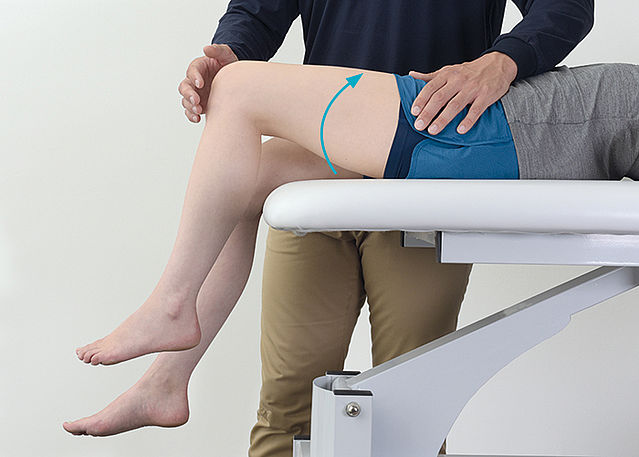
Hip Flexion - Muscle Strength 3
The patient lies on the back, the lower legs hang over the edge of the bed. Fix with one hand the pelvis without restricting the muscle function. Have the patient bring the hip in flexion. At complete range of motion against gravity, the muscle strength is 3.Step 4/10
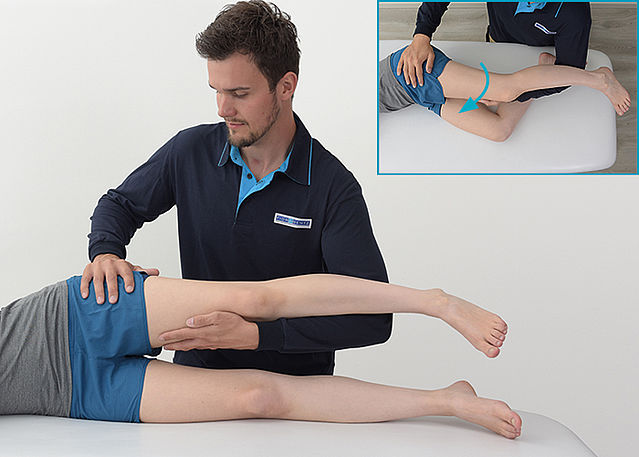
Hip Flexion - Muscle Strength 2
The patient lies on the side of the leg not to be tested, the leg to be tested is slightly flexed in hip and knee. Support and lift the upper leg with one hand. Fix with the other hand the pelvis without restricting the muscle function. Have the patient bring the hip in flexion. At complete range of motion with gravity eliminated, the muscle strength is 2.Step 5/10
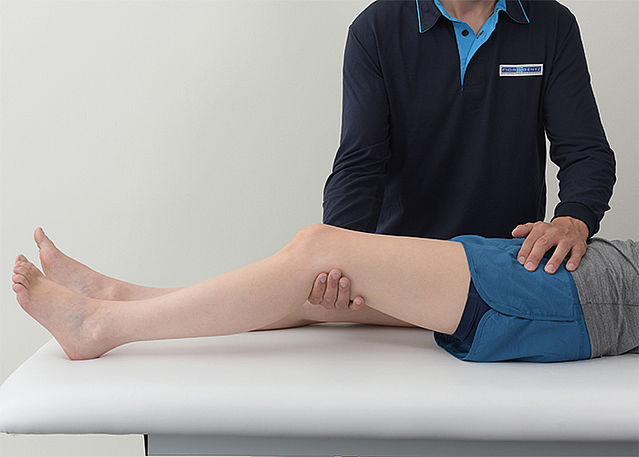
Hip Flexion - Muscle Strength 1 and 0
The patient lies on the back, hip and knee are slightly flexed. Support the flexed knee with one hand. Have the patient bring the hip in flexion. With the other hand, palpate if there is any muscle activity. At slight contraction with no joint motion, the muscle strength is 1. At no evidence of contraction, there is a total paralysis and the muscle strength is 0.Step 6/10
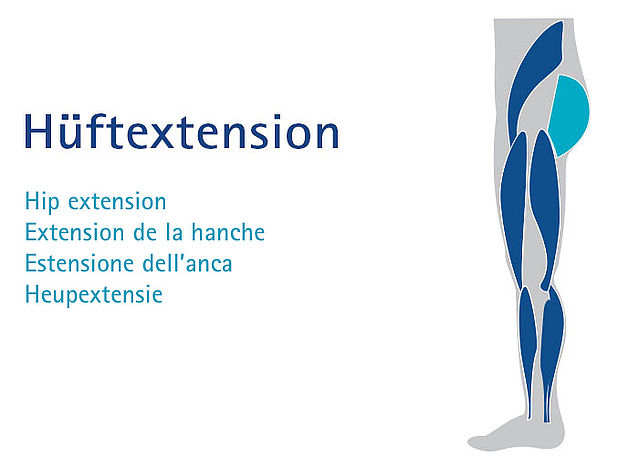
Step 7/10
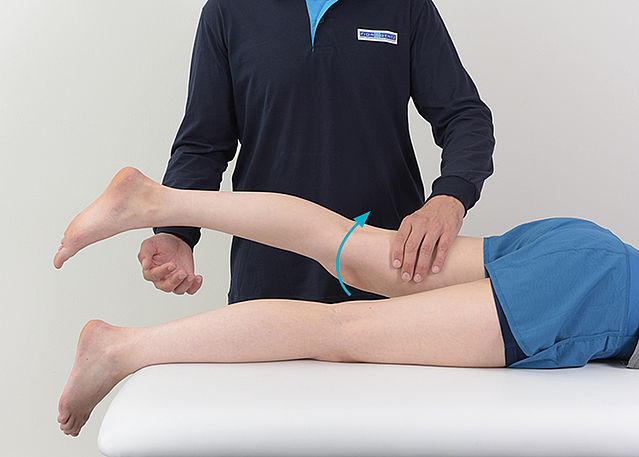
Hip Extension - Muscle Strength 5 and 4
The patient lies on the stomach, the feet hang over the edge of the bed. Push against the thigh close to the knee with one hand. Have the patient bring the hip in extension. Make sure that the pelvis stays on the bed. At complete range of motion against gravity with full resistance, the muscle strength is 5. At complete range of motion against gravity with some resistance, the muscle strength is 4.Step 8/10
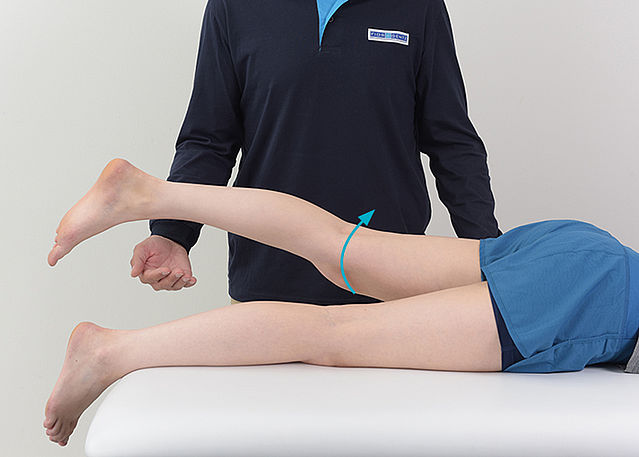
Hip Extension - Muscle Strength 3
The patient lies on the stomach, the feet hang over the edge of the bed. Have the patient bring the hip in extension. Make sure that the pelvis stays on the bed. At complete range of motion against gravity, the muscle strength is 3.Step 9/10
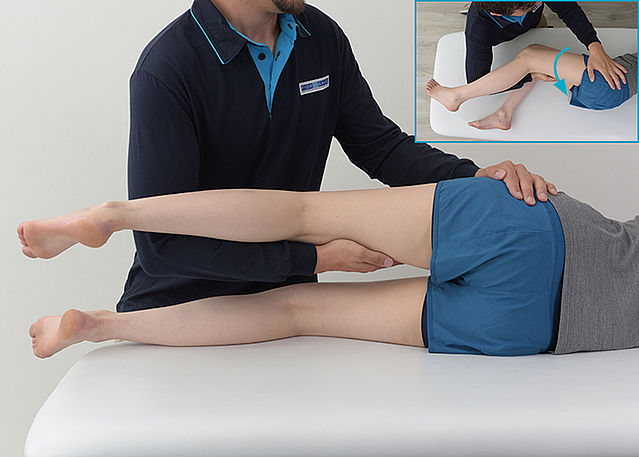
Hip Extension - Muscle Strength 2
The patient lies on the side of the leg not to be tested and the upper leg is slightly flexed. Support and lift the upper leg with one hand. Fix with the other hand the pelvis without restricting the muscle function. Have the patient bring the hip in extension. At complete range of motion with gravity eliminated, the muscle strength is 2.Step 10/10
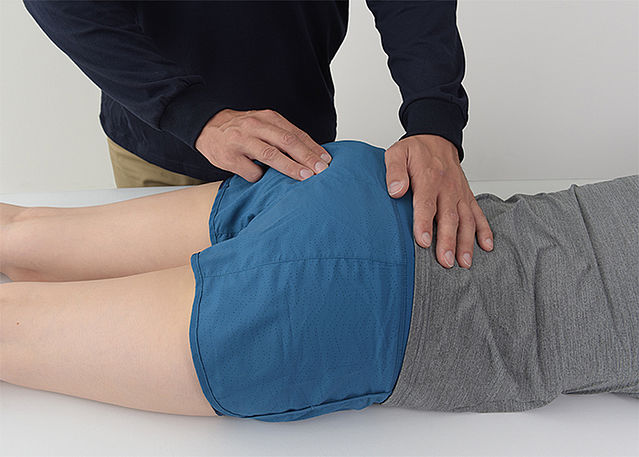
Hip Extension - Muscle Strength 1 and 0
The patient lies on the stomach. Have the patient bring the hip in extension. Palpate if there is any muscle activity. At slight contraction with no joint motion, the muscle strength is 1. At no evidence of contraction, there is a total paralysis and the muscle strength is 0.









-
Activity
-
Step 1/5
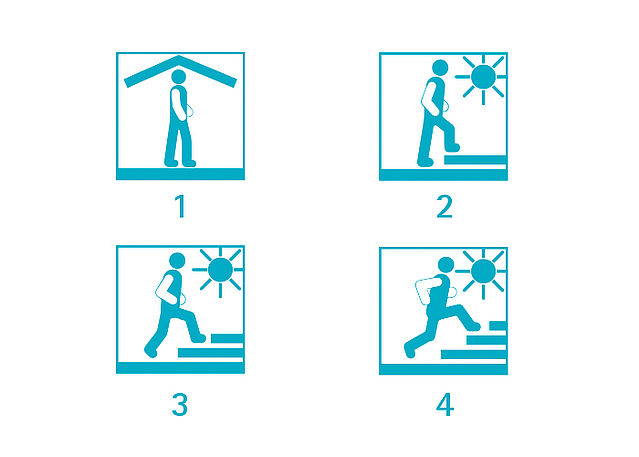
Activity Level
Evaluate the activity level together with your patient while already taking into consideration foreseeable changes:Step 2/5
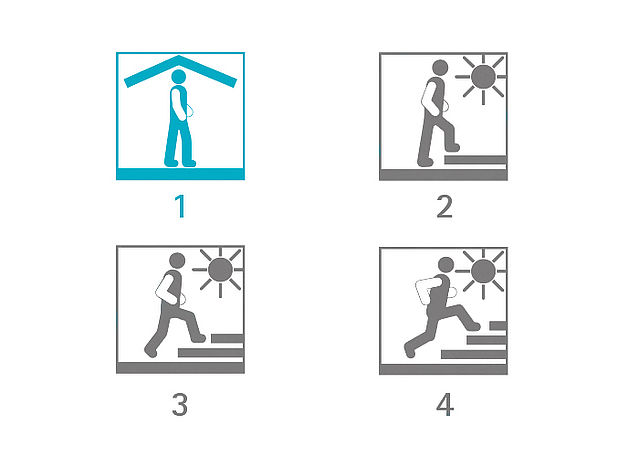
1. Indoor Walker
The patient has the ability or the potential to make transfers and to move with an orthosis on even surfaces at low walking speed. Ambulation is possible for a very short distance and duration due to the physical condition of the patient.Step 3/5
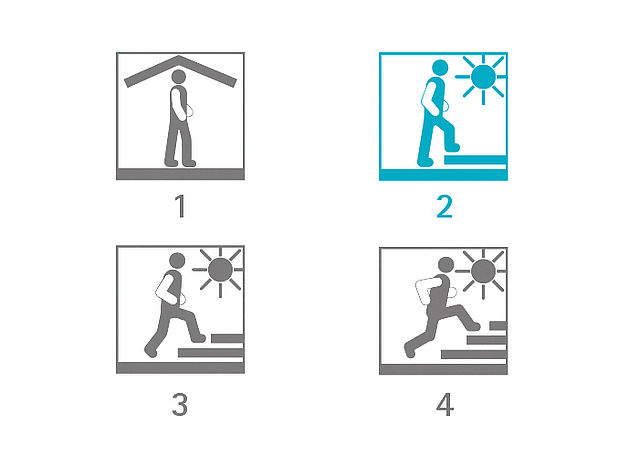
2. Restricted Outdoor Walker
The patient has the ability or the potential to move with an orthosis at low walking speed and is able to overcome small environmental obstacles such as curbs, single steps or uneven surfaces.Step 4/5
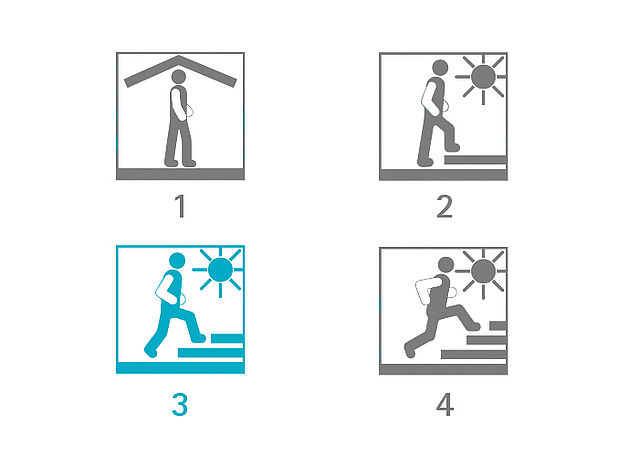
3. Unrestricted Outdoor Walker
The patient has the ability or the potential to move at medium to high and also varying speed and to overcome most environmental obstacles. Additionally, the patient can walk on open terrain and perform professional, therapeutic and other activities which do not apply an above average mechanical load on the orthosis.Step 5/5
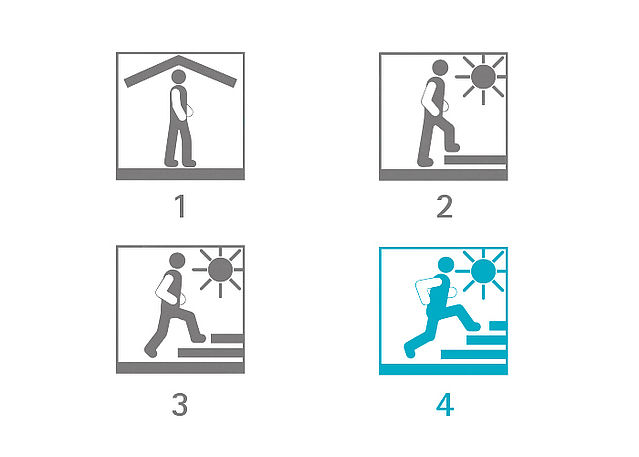
4. Unrestricted Outdoor Walker with Especially High Demands
The patient has the ability or the potential to move with an orthosis like the unrestricted outdoor walker. Additionally, the increased functional demands can generate high impact loads, tension and/or deformation on the orthosis. These patients are mainly athletes and children.




-
ap Measurement
-
Step 1/1
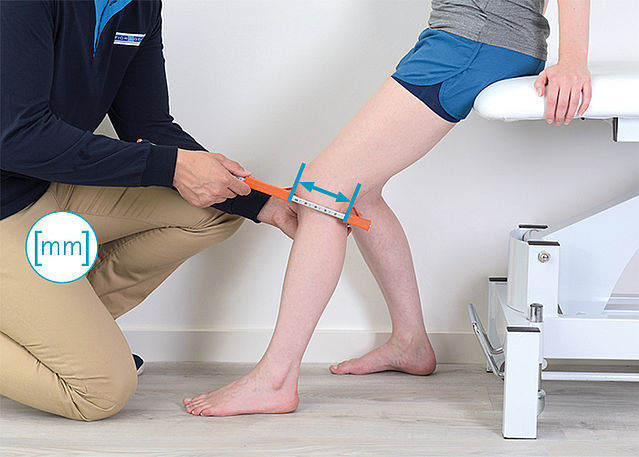
ap Measurement at Knee Height
Determine the ap measurement by using a calliper. Measure on the slightly flexed knee when the muscles are relaxed. Measure rectangular from the knee fold to the longitudinal axis of the lower leg and parallel to the movement direction.
Note: In order to avoid measuring errors, do not use the patella as basis to determine the ap measurement as the patella’s position can vary (e.g. at luxations, TEPs and patella alta).
Last Update: 21 Novenber 2019
FIOR & GENTZ
Gesellschaft für Entwicklung und Vertrieb von orthopädietechnischen Systemen mbH
Dorette-von-Stern-Straße 5
D-21337 Lüneburg
Tel.: +49 4131 24445-0
Fax: +49 4131 24445-57
E-Mail: info(at)fior-gentz.de
Beratung und Technischer Support
